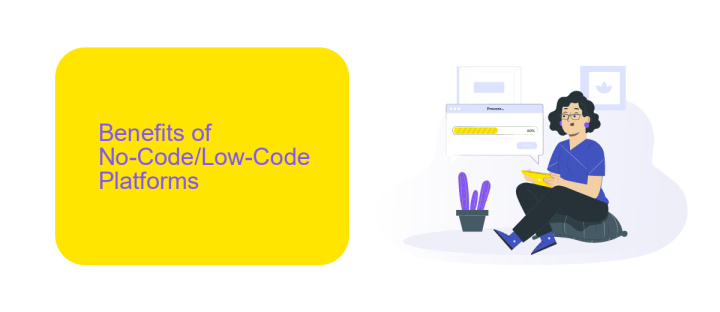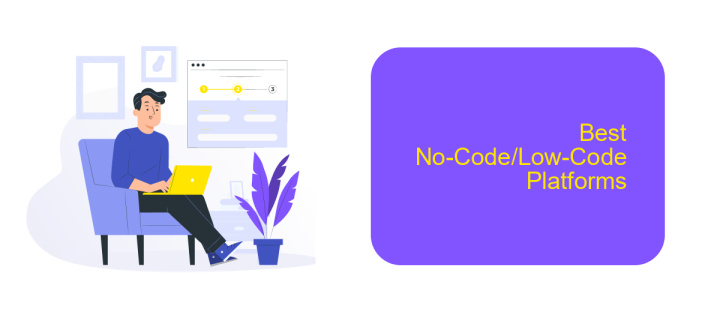Best No-Code Low-Code Platforms
In today's fast-paced digital landscape, the demand for efficient and accessible software development solutions is higher than ever. No-code and low-code platforms have emerged as game-changers, enabling individuals and businesses to create applications without extensive coding knowledge. This article explores the best no-code and low-code platforms available, highlighting their key features and benefits to help you choose the right tool for your needs.
Introduction
In today's fast-paced digital landscape, businesses and individuals alike are seeking efficient ways to develop applications without the need for extensive coding knowledge. No-code and low-code platforms have emerged as powerful solutions, enabling users to create sophisticated applications with minimal technical expertise. These platforms democratize the development process, making it accessible to a broader audience.
- Streamlined application development
- Cost-effective solutions
- Faster time to market
- Enhanced collaboration between teams
One such platform that stands out in the realm of no-code and low-code development is ApiX-Drive. This service allows users to easily set up integrations between various applications, automating workflows and enhancing productivity. Whether you are a small business owner or a large enterprise, leveraging no-code and low-code platforms can significantly boost your operational efficiency and innovation capacity.
Benefits of No-Code/Low-Code Platforms

No-code and low-code platforms offer numerous benefits, making them an attractive option for businesses and developers alike. Firstly, they significantly reduce development time by providing pre-built templates and drag-and-drop interfaces, enabling even non-technical users to create functional applications quickly. This accelerates the time-to-market for new products and services, allowing companies to stay competitive and responsive to market demands.
Additionally, these platforms lower development costs by minimizing the need for extensive coding expertise and reducing reliance on specialized IT staff. Integration with various services is also simplified; for instance, ApiX-Drive facilitates seamless connections between different applications, enhancing workflow automation and data synchronization. This means businesses can effortlessly integrate CRM systems, marketing tools, and other essential software, streamlining operations and improving efficiency. Overall, no-code and low-code platforms democratize application development, making it accessible and cost-effective for a broader audience.
Types of No-Code/Low-Code Platforms

No-code and low-code platforms have revolutionized the way businesses approach software development by enabling non-technical users to create applications with minimal coding knowledge. These platforms can be broadly categorized into several types:
- Application Development Platforms: These platforms allow users to build custom applications using drag-and-drop interfaces. Examples include AppSheet and Bubble.
- Website Builders: Tools like Wix and Squarespace enable users to create websites without needing to write any code.
- Integration Platforms: Services such as ApiX-Drive facilitate the integration of different software applications, automating workflows and data exchange.
- Business Process Management (BPM) Platforms: These platforms help in designing, automating, and optimizing business processes. Examples include Kissflow and Nintex.
- Data Management Platforms: Tools like Airtable and Zoho Creator allow users to manage and analyze data without deep technical expertise.
Each type of no-code/low-code platform serves a specific purpose, catering to different business needs. Whether you are looking to build a website, automate workflows, or manage data, there is a platform designed to simplify the process and empower non-technical users.
Best No-Code/Low-Code Platforms

In today's fast-paced digital landscape, No-Code and Low-Code platforms have emerged as game-changers for businesses looking to accelerate their development processes. These platforms enable users to create applications with minimal coding knowledge, making technology accessible to a broader audience.
Choosing the right platform can be challenging given the plethora of options available. However, some platforms stand out due to their ease of use, versatility, and robust feature sets. Here are some of the best No-Code/Low-Code platforms to consider:
- Bubble: A powerful no-code tool for building web applications with a visual interface.
- OutSystems: A low-code platform designed for enterprise-grade applications.
- ApiX-Drive: Excellent for setting up integrations between various applications without coding.
- Appgyver: Offers a comprehensive suite of tools for building mobile and web apps.
- Zapier: Automates workflows by connecting different apps and services seamlessly.
These platforms not only democratize application development but also enhance productivity by reducing the time and resources required. Whether you're a startup or an established enterprise, leveraging these tools can provide a competitive edge in today's digital world.


Conclusion
In conclusion, the landscape of no-code and low-code platforms is rapidly evolving, offering a plethora of options for businesses and individuals looking to streamline their development processes. These platforms empower users to create sophisticated applications without the need for extensive coding knowledge, making technology more accessible and fostering innovation across various industries. As the demand for rapid and efficient solutions continues to grow, the importance of choosing the right platform becomes paramount.
Among the numerous tools available, integration services like ApiX-Drive play a crucial role in enhancing the functionality of these platforms. By seamlessly connecting various applications and automating workflows, ApiX-Drive ensures that users can maximize the potential of their no-code and low-code solutions. Whether you're a startup looking to scale quickly or an established enterprise aiming to optimize operations, leveraging the right tools and services can significantly impact your success. As we move forward, the synergy between no-code, low-code platforms, and integration services will undoubtedly shape the future of digital innovation.
FAQ
What are the benefits of using no-code/low-code platforms?
Can no-code/low-code platforms handle complex integrations?
Are no-code/low-code platforms secure?
Can I scale my application built on a no-code/low-code platform?
How do no-code/low-code platforms support automation?
Time is the most valuable resource for business today. Almost half of it is wasted on routine tasks. Your employees are constantly forced to perform monotonous tasks that are difficult to classify as important and specialized. You can leave everything as it is by hiring additional employees, or you can automate most of the business processes using the ApiX-Drive online connector to get rid of unnecessary time and money expenses once and for all. The choice is yours!

